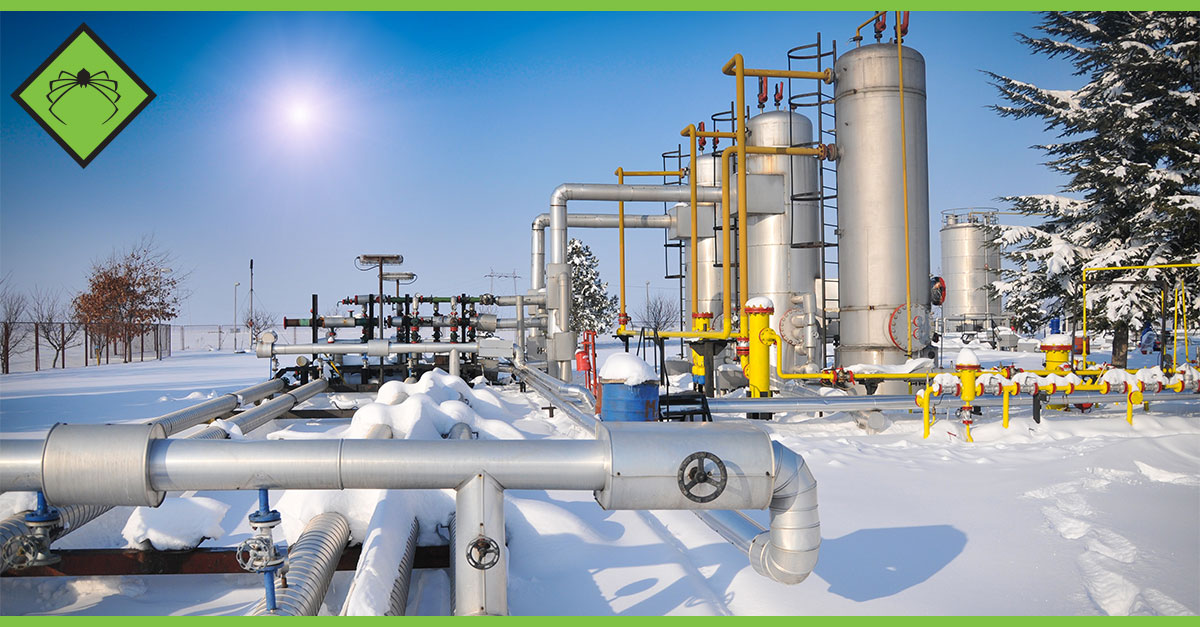How to Start a Diesel Generator in Cold Weather
Whist it rarely gets particularly cold in most of the southern UK, the farther north you go the more you chance encountering sub-freezing temperatures in the winter. If you need to supply portable or backup power halfway up a mountain in Scotland, it never hurts to brush up on starting these engines in cold weather!
Diesel Generators in Cold, Snow & Ice Weather
Diesel generators can simply be difficult to start in cold weather. At 0°C, the battery will typically deliver less than half the current it would at more normal temperatures. The fuel and lubricating oil can even become thick or tarry in the middle of a particularly cold snap, which can prevent starting altogether.
One way to make sure your backup power supply will really be there to back you up when the temperature drops is to test it. See if it will start normally. Possibly schedule extra inspection and maintenance sessions during the coldest weather. It won't be much fun, but it could tell you a lot more about your unit's performance in the cold than checking it in summer would.
How to Start a Genset in the Cold
Make sure your engine block heater is plugged in to a working power supply, and turned on!
It is tempting to cut costs a little by turning this device off - after all, you hardly ever need it! Just the same, when cold weather is on the horizon, make sure your block heater is on the job. If you don't have access to mains power, consider installing a very small generator just to run the block heater. You don't have to run it constantly, but you will need to warm up your generator for a few hours before trying to start it.
If you have just been tasked with supplying backup power somewhere where it gets particularly cold, your equipment might not even have a block heater. If that is the case, get one. It really isn't worth the hassle if your power supply refuses to work when it is really needed.
Keep the battery charged to peak at all times
The easiest way to do this is to keep the battery charger connected to mains current, just as with the block heater. If you don't have mains, you can probably plug the charger into the same small generator as the heater.
Follow the manual
We'd put this at number one, but we know it's not the first thing most people will try. In all seriousness, your generator should have come with a detailed manual which will include, among other important information, advice on operating and maintaining it in cold weather. If that information contradicts anything we've said here, assume the manual is correct. After all, it was written for your unit in particular.
Inspect the generator before starting it
This should include a full walk-around and visual inspection. Look for stains, puddles, and debris, or any other sign that something is out of order.
Don't skimp on regular maintenance
If you're reading this because your generator won't start, it is probably too late. However, we'll take this opportunity to remind you to look into the basics (oil, coolant, ignition system, and sir filter), as well as making sure your battery is performing at its best (considering the temperature).
Older models with digital control panels may not operate in extreme cold
This shouldn't be a problem with newer units, but the electronics in some older digital control panels can fail in extreme cold. Some won't turn on at all, others may simply have unreadable gauges. Test your unit out in the cold before you need it, so that this doesn't surprise you.
Make sure your exhaust and ventilation systems are up to standard
Sometimes, heavy snow can choke your generator, preventing it from starting. In that case, you may wish to install a snow hood to prevent this, and ensure proper ventilation generally. It may also be worth investing in hydraulic louvers in very cold climates - these can restrict the amount of freezing cold air entering the unit during start-up, which can cause stalling.
Make sure your fuel is still liquid
Diesel fuel can gel in very cold temperatures, and if it does your generator won't be starting any time soon. You can of course buy fuel that has been treated with anti-gelling and anti-microbial agents, or you can add anti-gelling compound when you know cold weather is on the cards.
Think about "winterising" your generator
You can book a diesel generator winterising service that includes essential add-on parts (such as the block heater we discussed earlier) and various additives to help your genset start more reliably in extreme cold.
With a little forward planning, your diesel backup generator should really be able to handle any weather the UK has to throw at it, but if you're expecting particularly harsh weather, it can't hurt to give it a little extra TLC. After all, it might save you a lot of hassle when you really need it.
For more information, or to discuss your requirements with our team of experts, call us on +44 (0) 1977 657 982 or email us at enquiries@ade-power.com.
Diesel Generators How Does an Electric Generator Work?Share this Post
Blog published by ADE Power on July 19th, 2017


